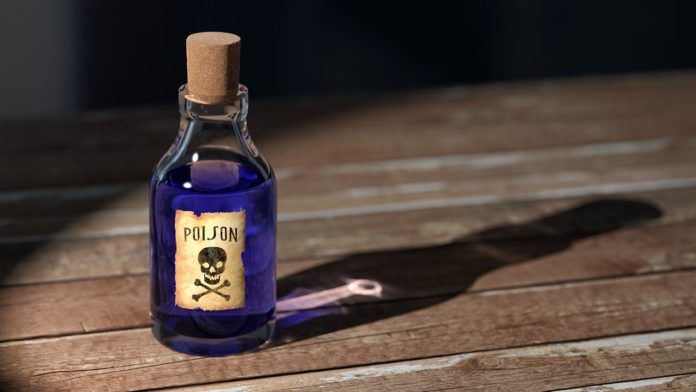The Consumer Law Page lists the Top 12 Hazardous Household Chemicals:
- Air Fresheners – Don’t let the commercials fool you. Most air fresheners interfere with your ability to smell by disabling your nasal passages with an oil film or a nerve-deadening agent. Common chemicals in air fresheners include formaldehyde (a highly toxic known carcinogen) and phenol (which can cause hives, convulsions, circulatory collapse, coma, and even death).
- Ammonia is a volatile chemical that can damage your eyes, respiratory tract, and skin.
- Bleach is a strong corrosive that can damage the skin, eyes, and respiratory tract. NEVER mix bleach with ammonia, as the fumes can be deadly.
- Carpet and Upholstery Shampoos generally contain highly toxic substances like perchlorethylene (a known carcinogen that damages the liver, kidneys, and nervous system) and ammonium hydroxide (a corrosive that irritates eyes, skin, and respiratory passages).
- Dishwasher Detergents – Most of them contain highly concentrated chlorine, which is the #1 cause of child poisonings.
- Drain Cleaners commonly include lye (which can burn skin and eyes, and the esophagus and stomach if ingested), hydrochloric acid (a corrosive eye and skin irritant that damages kidneys, liver, and digestive tract), or tricholoroethane (eye and skin irritant and nervous system depressant).
- Furniture Polish is highly flammable and can cause skin and lung cancer. It often contains phenol as well as nitrobenzene, which is an extremely toxic chemical that’s easily absorbed through the skin.
- Mold and Mildew Cleaners often contain sodium hypochlorite (a corrosive which can lead to fluid in the lungs) and formaldehyde (a highly toxic, known carcinogen). To clean mold and mildew safely – and to prevent it from coming back – use M-1 House Wash and M-1 Sure Cote Sealant.
- Oven Cleaner contains lye (sodium hydroxide). Lye is often used to dissolve roadkill dumped in landfills; that can’t be healthy.
- Antibacterial Cleaners often contain triclosan, which is absorbed through the skin and linked to liver damage. Antibacterial soaps may also contribute to the development of drug-resistant bacteria.
- Laundry Room Products may contain sodium or calcium hypocrite (a highly corrosive agent that can irritate the skin and eyes), hypochlorite bleach (a corrosive that can burn the eyes, skin, and respiratory tract). If exposed to other chemicals, hypochlorite bleach may form chlorine fumes that could be fatal.
- Toilet Bowl Cleaners may contain hydrochloric acid or hypochlorite bleach.
Other Dangerous Chemicals around the House
- Pesticides – Dimpylate, or Diazinon, is extremely toxic and impairs the central nervous system. Chlorinate hydrocarbons are suspected carcinogens and mutagens; they accumulate in fatty tissue and attack the nervous system. Organophosphates are toxic and poisonous; if you can smell it, that means your lungs are absorbing it.
- Lice Shampoo – Inhalation, ingestion, or absorption of lindane causes vomiting, convulsions, and circulatory collapse and may cause liver damage, stillbirths, birth defects, and cancer.
- Car Wash, Car Polish – Petroleum distillates are associated with skin and lung cancer, and they irritate the skin, eyes, nose, and lungs. Inhalation could cause fatal pulmonary edema (fluid in the lungs).
Chemical Warning Labels
The information below is actually new to me, and it’s very interesting and helpful!
DANGER means that the chemical is harmful or fatal if swallowed. Ingestion of a small taste to a teaspoon could kill an average sized adult.
WARNING means that the chemical is harmful if swallowed. Ingestion of a teaspoon to an ounce could kill an average sized adult.
CAUTION means that the chemical is harmful if swallowed. Ingestion of an ounce to a pint could kill an average adult.















